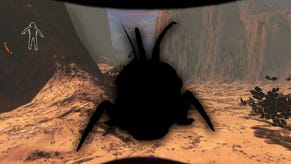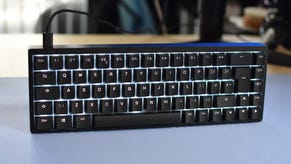Cardboard Children - Horus Heresy: Betrayal at Calth
Games Workshop at their best.
Hello youse.
Most of you who read these pages will be aware that the Games Workshop board game Space Hulk is one of my favourite games of all time. In fact, it was re-buying Space Hulk that brought me back into board gaming in a big way. So I've always had a soft spot for Games Workshop's line – in particular, I'm always impressed by how lovingly the stories behind the games are told. Games Workshop's “fluff” is second-to-none, and they've always tried to make sure that every die you roll has a backstory of some real weight. And when it comes to backstory, there's nothing quite like The Horus Heresy, the tale of how the events of Warhammer 40K came to pass.
And now there's a brand new board game about one of the key battles in the time of The Horus Heresy. I'll be covering it in two parts – today, those first impressions.
THE HORUS HERESY: BETRAYAL AT CALTH
The forces of Chaos, acting through the Warmaster Horus, are making their move on the Emperor of Mankind. On the planet Calth, the Word Bearers – once loyal to the Emperor, now twisted by resentment and evil – chase down their former brothers, the Ultramarines. This two player game sets out scenarios that tell the story of this dark betrayal on Calth.
First things first – this ain't no game for rookies. It's an expensive (but great value), tactically sophisticated board game that will demand a good few hours of preparation before you can play. The miniatures included in the game – all those beautiful old-school Space Marines and Terminators and such – come on the traditional Games Workshop sprues, and you're going to have to cut, snip and glue every one together using the elegant new construction instructions.
For some of you, that's maybe already a dealbreaker. But listen – don't dismiss the process of assembling your miniatures until you've given it a try. I find it a really calming experience, a bit of a chill-out, as I play some music and carefully assemble each little guy. And the game comes with a lot of options in the building process too – you can choose, to an extent, which weapons to glue onto your miniatures. Assembling on your own means you can pose the miniatures how you wish too. A raised arm here, a lean there, a head turned this way or that. It's an enjoyable process, I think, and never really feels like work.
The miniatures are, of course, beautiful. It's worth noting that the Marines included in the game hail from the time of the Horus Heresy, at the very point of betrayal, so many of the good guys and the bad guys look almost identical. Painting will definitely be something you'll want to do down the line, to separate those squads out – but I'm delighted with how the miniatures look straight out of that box. These are pure Space Marines, like I remember from my youth, and the opportunity for customisation is huge.
Everything else? Beautiful custom dice, printed with hits, shields and critical hit symbols. The board is built from three double-sided hex maps that are beautifully illustrated and printed on thick card. The cards – some detailing your units' stats for reference, and command cards for the Word Bearers and the Ultramarines – are oversized and sturdy. High quality production is a hallmark of Games Workshop's stuff, and this set doesn't disappoint.
CLEAN AND SIMPLE
First impressions, you say? Well, here's one. When you buy a big ol' game from, say, a Fantasy Flight or something, you can expect a massive amount of stuff in the box. Counters, tokens, a million things to track another million things. Just so much stuff. But in this box, apart from the miniatures, there isn't really that much. There are dice, some cards, and a couple of token types. There's not a great deal of bulk or mess.
Here's what I've always loved about Games Workshop stuff – there's a real cleanness about the design. There's never a great deal of mechanical clutter. Space Hulk is the prime example – it does so much with so few rules. But Blood Bowl is up there too – once you get the rules down, you're on solid ground. You can, optionally, incorporate other rules and wrinkles into both these games, but they are built on good, simple foundations.
Betrayal at Calth is easily understood on the first read of the rulebook. Every unit has two tactical points. Players alternate taking turns, spending tactical points to take actions (Move, Run, Consolidate, Shoot, Assault), attacks are resolved, and then tactical points are replenished. Attacks use dice pools, modified by the number of models included in a unit, and can be further modified by Line of Sight and Cover.
But often you'll find that clean rulesets open the door for a real measure of tactical depth, and I'm glad to say that's the case with this game. Often just the decision to Run – which spends both of a unit's tactical points in one go – can send a game spinning in a new direction. Movement is hex-by-hex, with a Run being the only way to advance more than one space outside combat, and so movement becomes entirely critical. Pinning your opponent, locking up areas of the board – it's instantly interesting, and that's just movement. (We're not even talking about the fact that a Run spends all of a unit's tactical points, and so it's a major decision.)
Of course, over and above these simple rules there are options. Many options. Each player's deck of command cards activate special abilities. The evil Word Bearers can lay down Chaos hexes on the board that force the good guys to re-roll. The heavily trained Ultramarines can kick out some advanced tactics unavailable to their opponents. The game is so tight that each of these cards brings a major swing to the game. It legitimately excites.
You might be wondering who the big guy is. He's a baddie. He's inside a giant Dreadnought. And he's a frickin' nightmare. When you attack him, you draw special damage cards that tell you which part of his body you've damaged. You have to dismantle this guy bit by bit. You can take out the legs, the weapons, the-
OH! The weapons! Yeah, I was talking about options. There are optional loadouts too, and different weapons bring different critical hit effects. The Meltagun just burns right through armour. The Combi-Bolter shakes its target so much that the target loses a tactical point.
See? So much stuff going on, with so little clutter.
But how does it play?
NEXT WEEK – SESSION REPORT
Yep, next week I'll be doing a session report on Betrayal at Calth. I've never done one of these before, so wish me luck! Why am I doing it? Well, remember what I said about Games Workshop putting so much effort into the story behind their games? The very first scenario in this game, called The Wrath of Veridia, absolutely blew me away. It's up there with Suicide Mission from Space Hulk. In fact, it's probably better. And this is just THE FIRST SCENARIO, with the bare minimum of the included miniatures. I want to cover it in detail, and next week I will.
For the time being, though, let me say this – I'm only still unpacking everything in this game, but so far I'm really excited. This might be something pretty special, I think. This is old-school Games Workshop, at its best.












